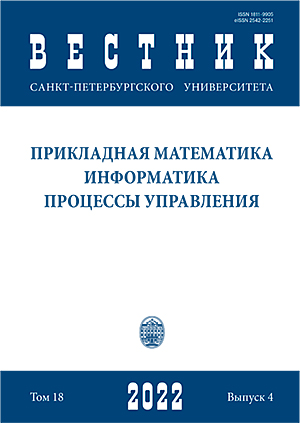Recovering complex reflection coefficient using the reference layer algorithm for multilayer systems with non-collinear magnetic ordering
DOI:
https://doi.org/10.21638/11701/spbu10.2022.412Abstract
This work analyzes two mathematical algorithms for processing experimental curves in polarized neutron reflectometry, one of which makes it possible to determine the complex reflection coefficient. The approbation was carried out for a Fe/Cr type superlattice with an irregular non-collinear ordering of the magnetic moments of the Fe layers. The processing of the experiment was carried out both by direct refinement of the structure parameters and by the method of calculating the module and phase of the reflectometry signal using the Gd reference layer. The results obtained with different methods are compared with each other. To clarify the structural and magnetic characteristics, the Levenberg-Marquardt algorithm was applied in both cases. The obtained data on the magnetic structure is in agreement with the theoretical model of magnetization of a layered antiferromagnet of finite dimensions in a weak field. The presented modification of the reference layer method can be considered as the phase problem solution in polarized neutron reflectometry.
Keywords:
polarized neutron reflectometry, phase-amplitude function method, Runge-Kutta method, complex reflection coefficient, multilayer nanoheterostructures, phase problem, non-collinear magnetic ordering, reference layer, Levenberg-Marquardt algorithm
Downloads
References
Downloads
Published
How to Cite
Issue
Section
License
Articles of "Vestnik of Saint Petersburg University. Applied Mathematics. Computer Science. Control Processes" are open access distributed under the terms of the License Agreement with Saint Petersburg State University, which permits to the authors unrestricted distribution and self-archiving free of charge.





